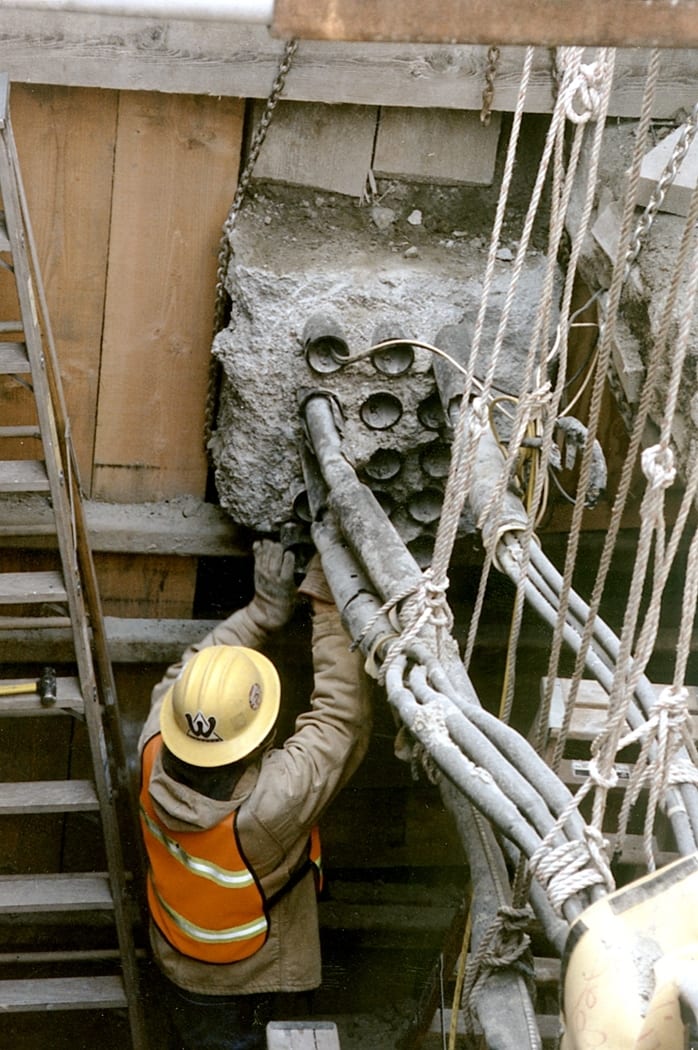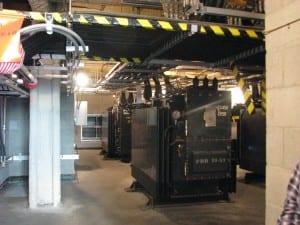This is the latest in an occasional series of posts featuring some of the interesting jobs and work at Your Seattle City Light.
Walking the streets of Seattle is a bustling experience of crosswalks, streetlights, tall buildings, cars, buses and bicycles.
The urban streetscape also includes utility hole covers, but few of us ever get to see what goes on beneath our city’s streets when Seattle City Light workers enter those doorways to the underground.
Under our feet, there is a system of big concrete boxes called vaults and smaller structures called duct banks. These vaults and duct banks host a variety of equipment, including transformers, cables, connectors and breakers, to deliver electricity to our customers.
“I never thought about the labyrinth of conduit and electrical cable under the ground that does such a vital job for the city,” says Brian Belger, a City Light crew chief.
Those vaults and duct banks are custom built by Seattle City Light’s estimated 175 construction crew members to fit the circumstances of a particular location. The equipment inside them is installed and maintained by City Light’s electrical crews. You can watch some of their work involving cable splicing in this video.
Perhaps the most basic piece of any electrical distribution system is the power line. In underground systems, power lines are made of insulated cable. The primary power line in a distribution system is called a feeder, which often serves 3,000 to 3,500 homes and businesses. Laterals are supported by feeders. They typically serve about 500 homes and businesses. Finally, there is a service line that takes electricity directly to a single home or business.
Another important piece of equipment in the electrical distribution system is a transformer. Transformers change the voltage of electricity. In most instances, the utility uses them to lower the voltage of electricity that is being delivered. Most of City Light’s distribution system operates at 26 kilovolts. Transformers are used to reduce that voltage to the appropriate level for use in a home or business, typically 220 volts.
The electrical distribution system also uses breakers. These are devices that are designed to break a circuit in the event of a power surge. They work exactly like the circuit breakers in the electrical panel of your home only on a much larger scale.
Underground systems are very important in congested areas with large buildings, such as downtown, First Hill and the University District.
Some buildings require multiple vaults and transformers to power their operations. For example, the Westin building in downtown Seattle will soon have five vaults, each with multiple transformers that run the entire load of electricity needed to power that one building.
In areas where businesses depend on uninterrupted power, Seattle City Light has installed network systems of underground cables that provide several redundant circuits. Maintenance crews can take a circuit offline to work on it without shutting off the power the other circuits provide to the customers. Network customers pay higher rates to connect to the enhanced reliability system.
“Our work can take us from busting out concrete one day to pulling in large electrical cable down the middle of a city street the next. There’s so much variety in what we do, it never gets boring,” Belger says.
Crews that build and maintain these underground systems often go unnoticed as they do their work, but they are an essential part of delivering electricity to about 400,000 homes and businesses. Throughout their work, they are focused on safety and service.
“They really take pride in the quality they provide for our customers,” said Wendy Zeldner, an electrical construction and management supervisor at City Light.
Seattle City Light is the 10th largest public electric utility in the United States. It has some of the lowest cost customer rates of any urban utility, providing reliable, renewable and environmentally responsible power to nearly 1 million Seattle area residents. City Light has been greenhouse gas neutral since 2005, the first electric utility in the nation to achieve that distinction.

